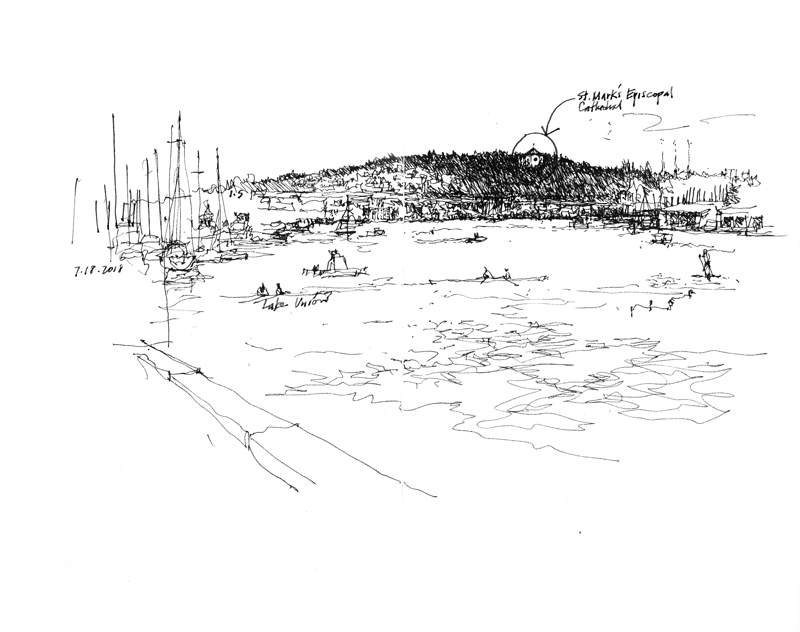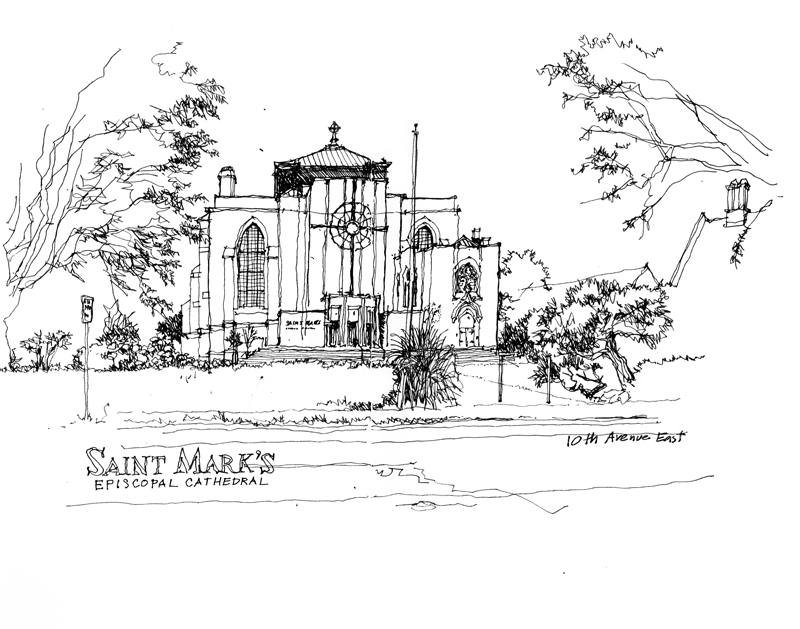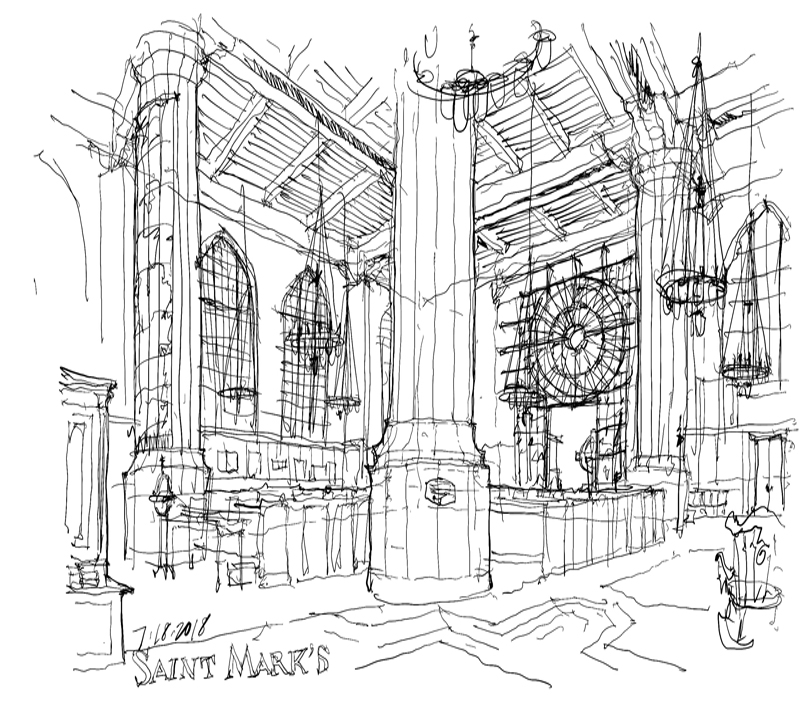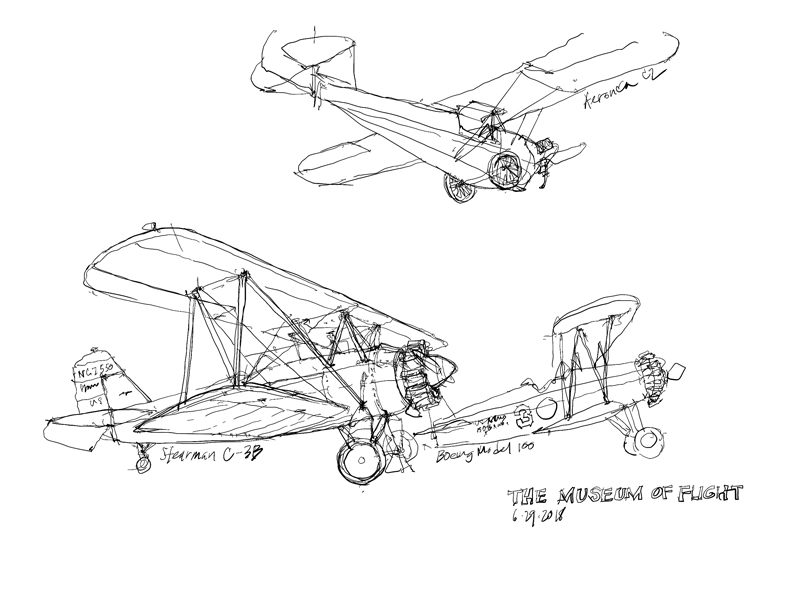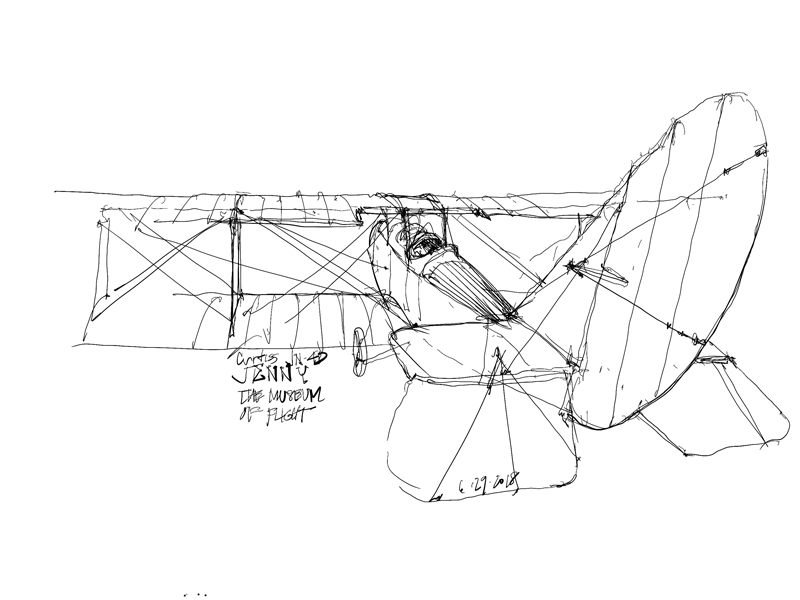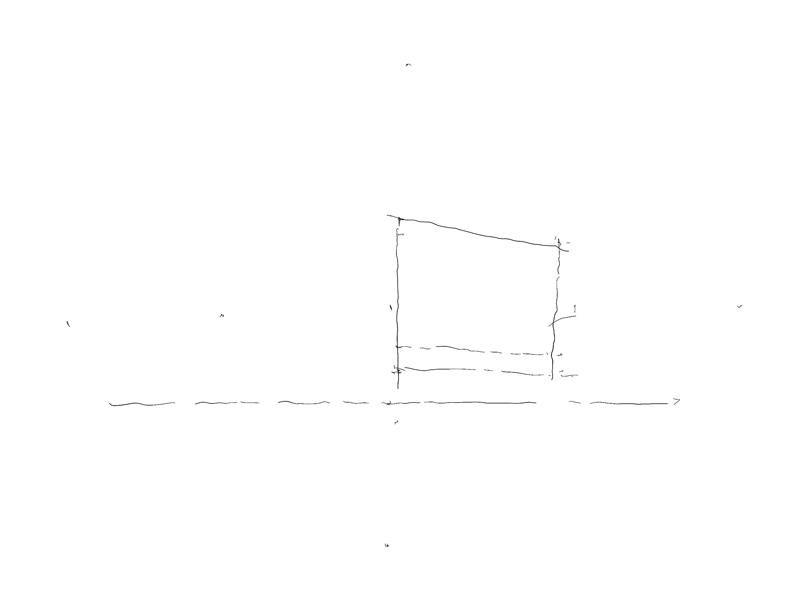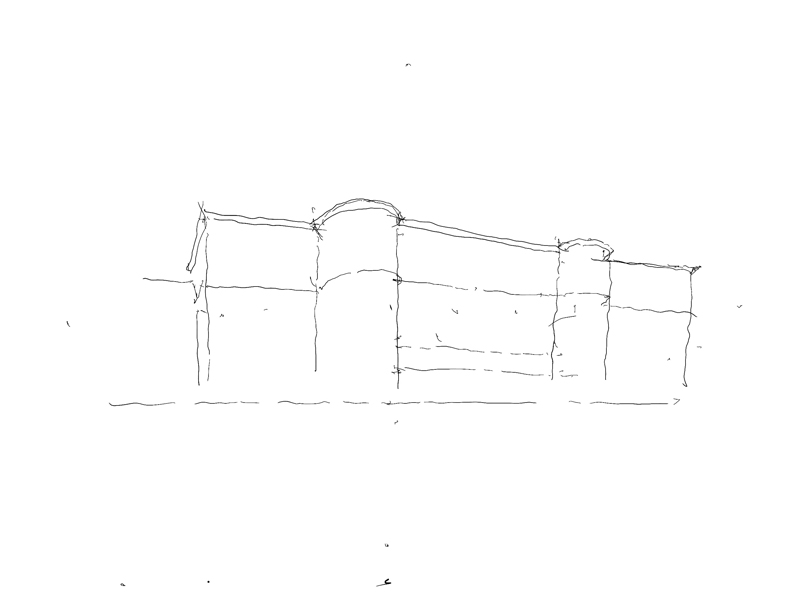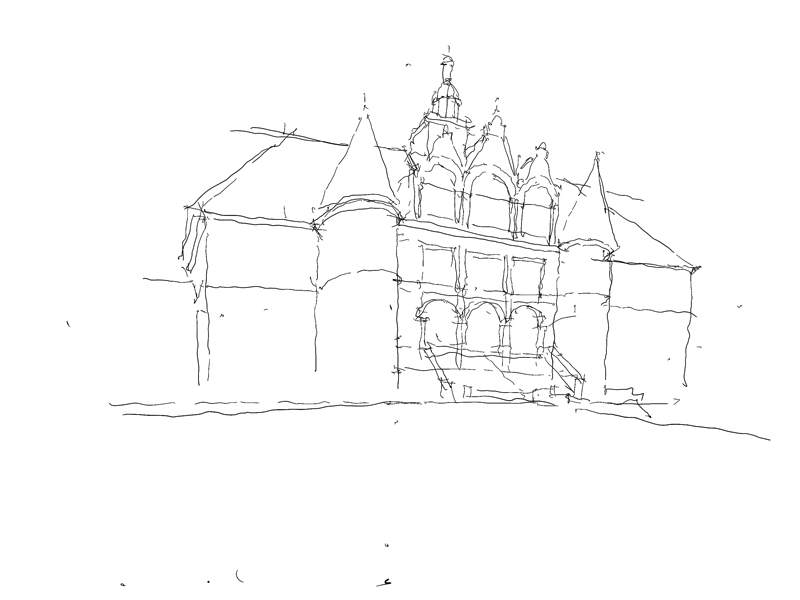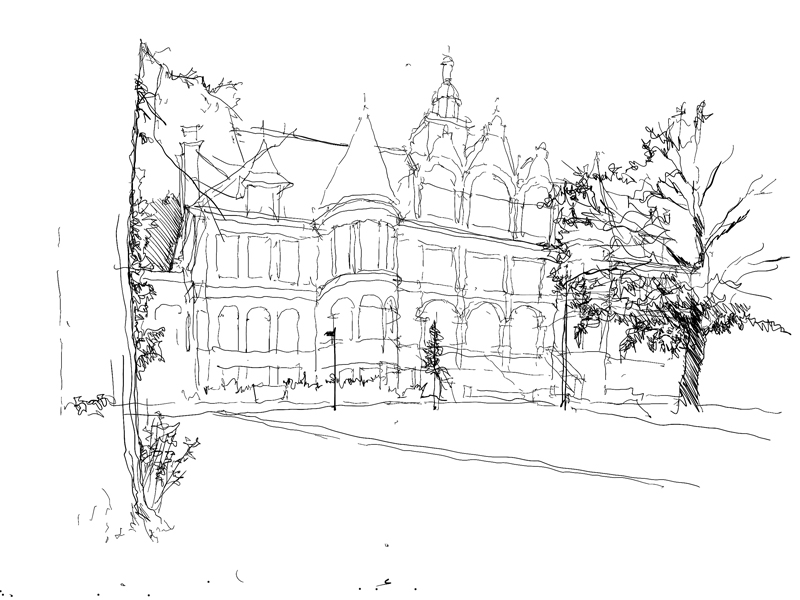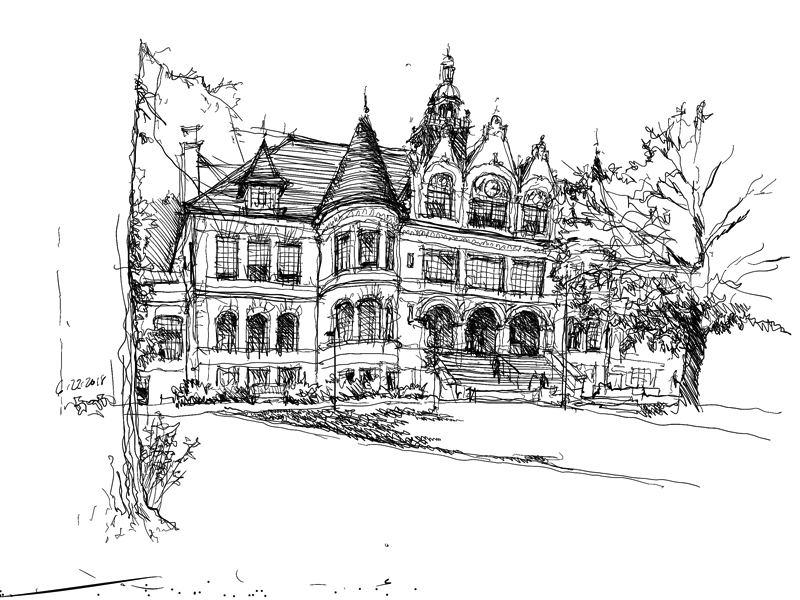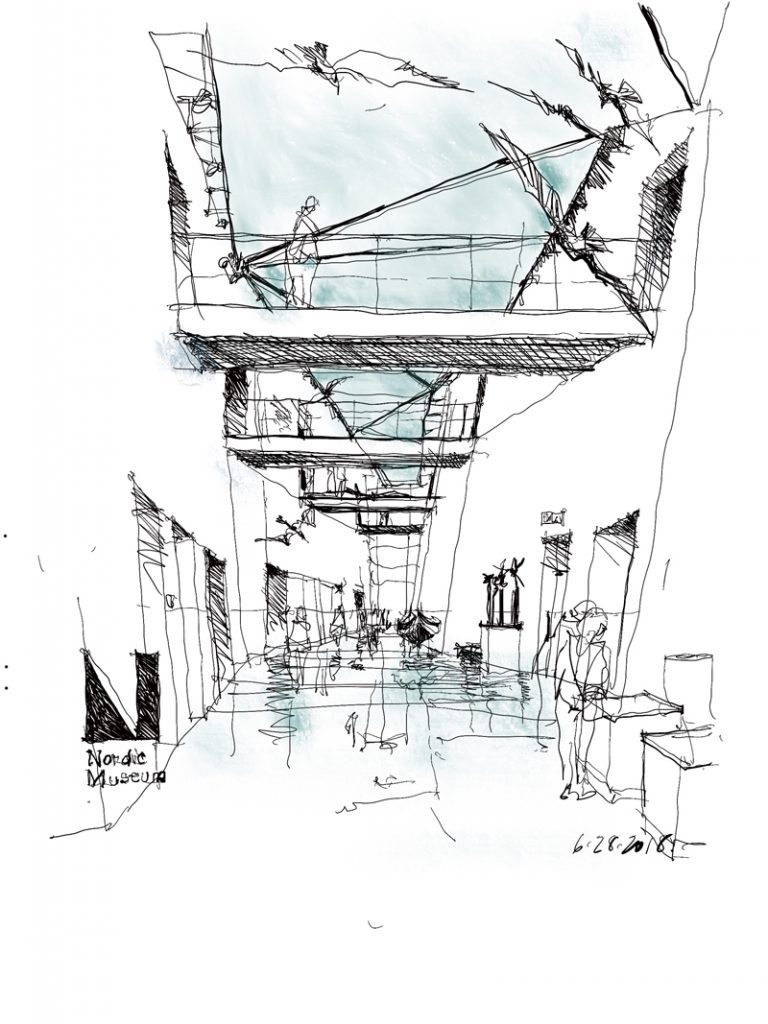Founded in 1889, St. Mark’s eventually outgrew its first two churches in downtown Seattle and on First Hill. So in 1926, plans were drawn up for a larger facility on Capitol Hill, on its present site overlooking Lake Union. It remains a Seattle landmark that can be seen from the west along the tree-lined ridge of north Capitol Hill.
Because of the Stock Market Crash of 1929 and the subsequent Great Depression, an incomplete cathedral was dedicated in 1931. And after a St. Louis bank foreclosed on the mortgage in 1941, the empty structure was used by the U.S. Army during WWII as an anti-aircraft gun training center. After the war, fundraising helped erase St. Mark’s debt and on Palm Sunday 1947, the mortgage was burned before the parish in front of the Altar.
What we see now is the result of a series of renovations and additions over the years, the latest of which is a redesign of the sanctuary by Olson Sundberg featuring a glass and steel screen by northwest artist Ed Carpenter.

